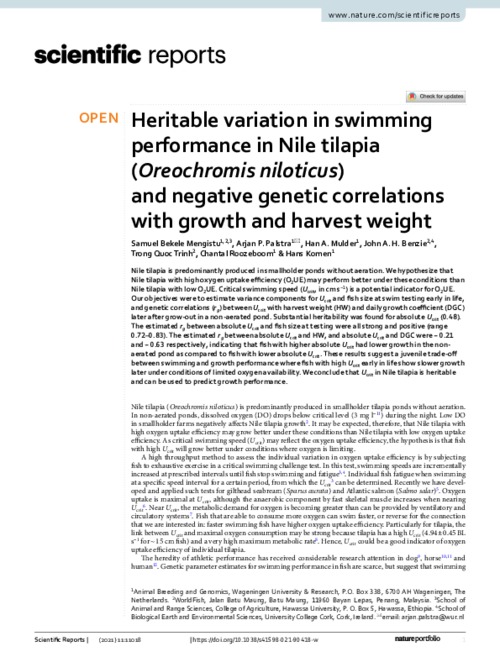Heritable variation in swimming performance in Nile tilapia (Oreochromis niloticus) and negative genetic correlations with growth and harvest weight

Nile tilapia is predominantly produced in smallholder ponds without aeration. We hypothesize that Nile tilapia with high oxygen uptake efficiency (O2UE) may perform better under these conditions than Nile tilapia with low O2UE. Critical swimming speed (Ucrit, in cm s−1) is a potential indicator for O2UE. Our objectives were to estimate variance components for Ucrit and fish size at swim testing early in life, and genetic correlations (rg) between Ucrit with harvest weight (HW) and daily growth coefficient (DGC) later after grow-out in a non-aerated pond. Substantial heritability was found for absolute Ucrit (0.48). The estimated rg between absolute Ucrit and fish size at testing were all strong and positive (range 0.72–0.83). The estimated rg between absolute Ucrit and HW, and absolute Ucrit and DGC were − 0.21 and − 0.63 respectively, indicating that fish with higher absolute Ucrit had lower growth in the non-aerated pond as compared to fish with lower absolute Ucrit. These results suggest a juvenile trade-off between swimming and growth performance where fish with high Ucrit early in life show slower growth later under conditions of limited oxygen availability. We conclude that Ucrit in Nile tilapia is heritable and can be used to predict growth performance.
Permalink
Date Available
Type
Publisher
ISSN
2045-2322
Copyright
CC-BY-4.0
Research Themes
Topics
Language